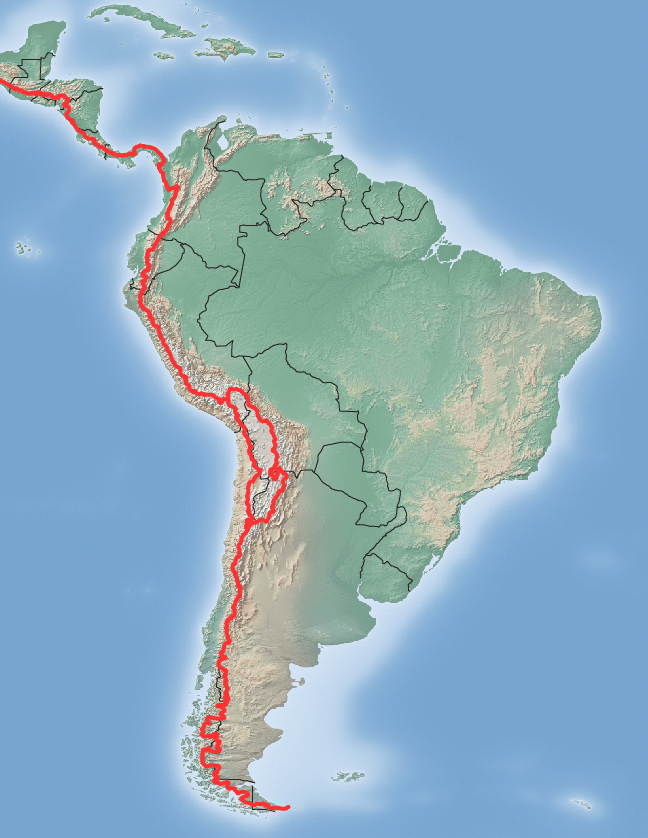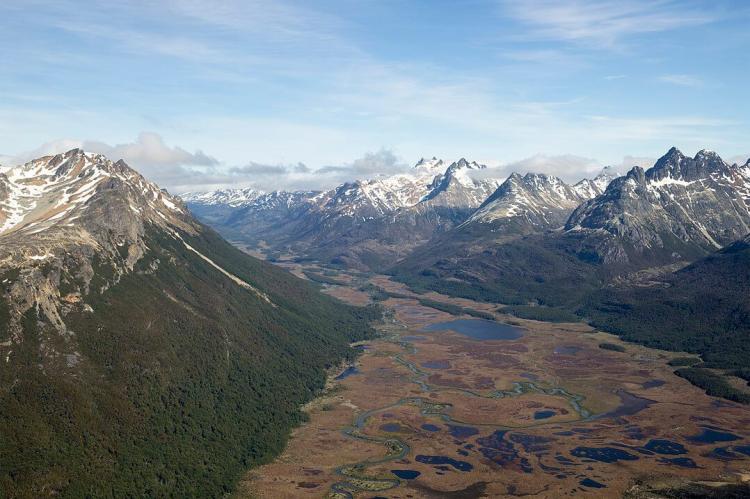The American Cordillera and the Continental Divide: A Geographical Backbone Shaping the Americas
The Americas' Continental Divide separates watersheds flowing into the Pacific Ocean from those flowing into the Atlantic. It spans North America's northernmost point to South America's southernmost tip and is linked to the creation and evolution of the mountainous American Cordillera.
The Continental Divide: Defining the Flow of Water
The Continental Divide of the Americas is a remarkable geographical feature that serves as the primary hydrological divide across the American continent. Stretching from the northernmost reaches of North America at the Bering Strait to the southernmost tip of South America at the Strait of Magellan, this divide delineates the watersheds that drain into the Pacific Ocean from those that flow into the Atlantic Ocean, including the Gulf of Mexico and the Caribbean Sea. In the northern regions, the Continental Divide also separates river systems that eventually reach the Arctic Ocean.
The Continental Divide is significant because it shapes water flow throughout the Americas. Rivers and streams on either side of the divide follow distinctly different paths to reach their ultimate destinations. This fundamental divide in water flow has profoundly impacted the development of ecosystems, climatic patterns, and human settlement across the continent.
The American Cordillera: The Geological Backbone
The Continental Divide of the Americas is inextricably linked to the formation and evolution of the American Cordillera, a vast and continuous chain of mountain ranges that form the western "backbone" of the American continent. Also known as the Andes Mountains, this remarkable geological feature stretches from the northernmost reaches of North America to the southernmost tip of South America, following the western edge of the Americas.
The American Cordillera, which includes the Sierra Madre Occidental, Sierra Madre Oriental, and the Andes Mountains, is the product of complex tectonic processes that have shaped the continent over millions of years. As the Pacific Ocean floor has been subducted beneath the western edge of the Americas, the resulting compression and uplift have given rise to the towering mountain ranges that define the Continental Divide.
Diverse Landscapes and Ecosystems
The Continental Divide and the American Cordillera have profoundly influenced the diverse landscapes and ecosystems throughout the Americas. Winding through the continent's varying topographies and climates, the divide has created a wide range of ecological zones, from the arid deserts of Mexico to the lush, temperate rainforests of the Pacific Northwest and the snow-capped peaks of the Andes Mountains.
This environmental diversity is further amplified by the numerous distinct mountain ranges and sub-ranges that make up the American Cordillera. Each of these geological features has its unique microclimate and ecosystem, which supports a wide array of plant and animal life, much of which is found nowhere else on Earth.
The Significance of the Continental Divide
The Continental Divide of the Americas is not merely a geographical marvel; it is a crucial element in the overall functioning and resilience of the American continent. By separating water flow into distinct watersheds, the divide has shaped the development of human settlements, agricultural practices, and transportation networks across the region.
Furthermore, the Continental Divide's role in defining the boundaries of major ecosystems and biomes has made it a vital consideration in conservation efforts, as protecting these natural systems is essential for maintaining the delicate balance of the continent's environment. As the impacts of climate change and human activity continue to threaten the integrity of the American Cordillera and the Continental Divide, the need for comprehensive and forward-thinking stewardship of this remarkable feature has become increasingly pressing.
The American Cordillera and the Continental Divide: A Shared Legacy
The American Cordillera and the Continental Divide of the Americas are inextricably linked, with the former serving as the geological foundation for the latter. Together, these two remarkable features have played a pivotal role in shaping the landscapes, ecosystems, and human history of the American continent, from the northernmost reaches of North America to the southernmost tip of South America.
As we continue to explore and understand the complexity of these geographical wonders, we are reminded of the profound interconnectedness of the natural world and the vital importance of preserving the integrity of these systems for generations to come. The American Cordillera and the Continental Divide stand as a testament to the resilience and dynamism of our planet, and their continued protection and study will be crucial in maintaining the delicate balance of the Americas.

Map depicting the location of the Continental Divide in Central America and South America.
